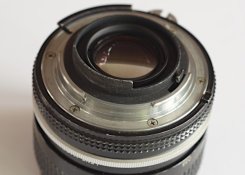keithostertag
Member
I have three old Nikon AIS analog lenses in good condition that I used for years:
Micro-Nikkor-P 55mm f3.5 sn666068
Nikkor 35mm f2 sn884671
Nikkor 24mm f2.8 sn518226
They are not particularly valuable, but I'd like to keep them and use them in the future. And I am tight on funds, so I can't easily replace them with modern types at this time.
I am considering buying a modern digital FX camera, maybe something similar to a Nikon D750, to use these with.
Other than the auto focusing issue, how will my old lenses compare to newer lenses? My concern is with sharpness, contrast, and color rendition, but you may know of other considerations.
Thanks,
Keith
Micro-Nikkor-P 55mm f3.5 sn666068
Nikkor 35mm f2 sn884671
Nikkor 24mm f2.8 sn518226
They are not particularly valuable, but I'd like to keep them and use them in the future. And I am tight on funds, so I can't easily replace them with modern types at this time.
I am considering buying a modern digital FX camera, maybe something similar to a Nikon D750, to use these with.
Other than the auto focusing issue, how will my old lenses compare to newer lenses? My concern is with sharpness, contrast, and color rendition, but you may know of other considerations.
Thanks,
Keith






